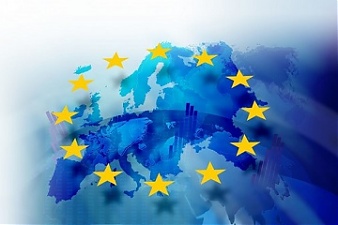Analytics, Banks, Direct Speech, Economics, Financial Services, Lithuania
International Internet Magazine. Baltic States news & analytics
Sunday, 28.12.2025, 07:11
Bank of Lithuania: The halfway point towards European prosperity surpassed, yet many challenges still await
BC, Vilnius, 24.01.2020. Print version
Print version
 Print version
Print versionOver the last two decades, the gap between the standard of living in Lithuania and the EU average has more than halved, placing Lithuania in the leading position among the rest of the new EU Member States. However, an analysis carried out by the Bank of Lithuania has shown that to reach the average EU prosperity level, the country will have to address complex challenges that may come on its way.
t
 |
|---|
“Lithuania has successfully run the larger part of the marathon towards the European standards of living. Nevertheless, it is crucial to remain vigilant at the halfway point in order to reach or even exceed the average income levels in Western Europe. If we fail to take action to address major economic challenges, we may indeed face the risk of ‘getting stuck’,” said Raimondas Kuodis, Deputy Chair of the Board of the Bank of Lithuania.
According to the latest data, Lithuania’s gross domestic product (GDP) per capita in purchasing power standards, which stood at 33% in 1995, is now above 80% of the EU average. Over the last 25 years, the ratio of Lithuania’s GDP per capita to the EU average increased two and a half times (48 percentage points). This is the highest rate of economic convergence among all new EU Member States, which means that Lithuania has been approaching the EU average at the most rapid pace. The country’s success was largely determined by its people – a well-educated workforce, economic openness, structural changes and accession to international organisations.
This indicator shows that the country has already overcome two-thirds of its road towards the EU’s economic prosperity. According to Bank of Lithuania calculations, if the Lithuanian and EU economies continue to grow at a similar rate as in the past decade, the country should reach the EU average by 2042. Such projections imply that it would take nearly 25 years for the level of household income and living standards in Lithuania to reach the set target. However, in view of potential economic challenges, particularly those related to labour force, it is impossible to guarantee that current economic trends will prevail in the future, since activity levels of almost all age groups (of those working or actively looking for a job) in the country’s labour market are one of the highest across the EU. Therefore, further opportunities to integrate more people in the labour market are relatively limited.
Moreover, the decline in the working-age population has been determined by unfavourable demographic trends: in the nearest future, the number of the so-called baby boomers (people born in the post-war period of the 20th century) leaving the workforce will increase by a third (roughly 37 thousand each year), compared to the number of younger cohorts (born after the restoration of Lithuania’s independence) entering the market (roughly 27 thousand each year). This negative factor could not be fully compensated by the positive migration balance (where immigration flows exceed the levels of emigration) which was recorded in 2019 for the first time since the restoration of independence.
“Despite being hampered by various challenges, Lithuania’s economy may still stay strong on its way towards the EU average. A proper response to these challenges would not only prevent the country from getting stuck at the same income growth levels, but could even help us to approach the Western European average in a shorter period of time,” said Gediminas Šimkus, Director of the Economics and Financial Stability Service at the Bank of Lithuania.
The analysis carried out by Bank of Lithuania economists identifies different ways to respond to potential difficulties, including the following key strategies: 1) to boost investment and productivity; 2) to pay particular attention to education and training; 3) to implement a proper migration policy which could help solve some of the mentioned issues; and 4) to encourage the use of technologies so that Lithuania could fully exploit the opportunities of increasing automation of jobs.
Other articles:
- 25.01.2021 Как банкиры 90-х делили «золотую милю» в Юрмале
- 29.12.2020 В Латвии вводят комендантский час, ЧС продлена до 7 февраля
- 29.12.2020 В Rietumu и в этот раз создали особые праздничные открытки и календари 2021
- 29.12.2020 Latvia to impose curfew, state of emergency to be extended until February 7
- 29.12.2020 Linde Gas открывает завод в Кедайняйской СЭЗ
- 29.12.2020 Lithuanian president signs 2021 budget bill into law
- 29.12.2020 Президент Литвы утвердил бюджет 2021 года
- 28.12.2020 Рынок недвижимости Эстонии осенью начал быстро восстанавливаться
- 28.12.2020
- 28.12.2020 Tartu to support students' solar car project








 «The Baltic Course» Is Sold and Stays in Business!
«The Baltic Course» Is Sold and Stays in Business!

